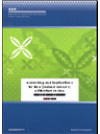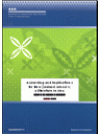This e-Learning literature review examined texts across a range of countries, but within a relatively short time frame of the preceding five years. A range of criteria were used to select or eliminate studies for closer review (see Methodology and Methods section). Some key terms are defined for the purpose of this review: outcomes, e-Learning, tools, affordances, Web 2.0.
Methodology
- Methodologically, this review had a tight time frame for completion, and for the years of interest (2004 to present). It also sought to examine texts from the following range of countries: USA, UK, Australia, NZ, Singapore, Scandinavian countries.
- The review discounts texts that principally focused on the tertiary sector, or which failed to address any of the ideas about outcomes canvassed in the definitions section of this review.
- The process for selecting and rejecting texts for closer scrutiny is outlined, and the approach to quantitative and qualitative studies is explained.
The relatively tight time-frame for this review meant that priorities were established to expedite the process. The first priority was settling on definitions of key terms such as ‘outcomes’. The review also needed to focus on sources available mainly within the last five years, including theses, journal articles, conference presentations, and reports relating to e-Learning and the compulsory schooling sector. This eliminated most texts that contextualised e-Learning in higher education, although a few were used because of the ideas they highlighted for the compulsory school sector. A third priority was linking e-Learning and student outcomes, while the next priority was to find texts which linked to teachers’ dispositions, pedagogy and e-Learning as factors in positive and deliberate classroom practices. The final priority was to select texts from targeted countries, particularly New Zealand as well as USA, Australia, UK, Singapore, and Scandinavian contexts. Singapore and Scandinavian contexts are of interest because they have widely available/free high-speed wireless, and this implies the potential for the wide use of e-Learning technologies in classrooms and beyond. However, even in these countries there are issues, as Krumsvik (2009) suggested about Norway’s educational use of these tools.
A key methodological issue to establish was what constituted evidence of e-Learning and outcomes. How these are interpreted for this review has been addressed earlier. Given that schools and classrooms are complex and fluid places, undertaking empirical research to establish causal links between these phenomena is difficult. While there are those who believe that “reliable and valid objective measures are necessary if we are ever to achieve true integration of information technology in education” (Maddux & Johnson, 2009, p. 1), qualitative research methods developed precisely because such objectivity was shown to be almost impossible to achieve as Richardson (1997) argued in a seminal work on methodological objectivity and interpretive social science. Many qualitative articles about ICT/e-Learning examined for this review, were richly descriptive of what happened and how, but thin on examining impact or outcomes. Quantitative studies demonstrating effect sizes of interventions referred to specific situations too, but sought to explain what happened in objective ways and sometimes make larger claims. Potential impediments important in educational contexts, such as how people felt on the day, what they already knew, or even what impact the environment might have had on any measure used to gather quantitative data in such settings are seldom addressed. Instead, it is common for quantitative studies to focus only on specific items of analysis separated out from the entire classroom context. The effects of contextual matters such as The Hawthorne Effect (this is explored in more detail later) therefore tend not to be addressed. Thus, the methodological basis for many of the studies’ conclusions examined for this review (whether qualitative or quantitative) are such that caution is required in applying findings to wider contexts.
In searching for reports, journal articles, theses and texts such as conference presentations (which may exist as slideshows or videos), a range of key words were systematically used to select, reject, review and summarise concepts, 12 e-Learning and New Zealand schools: a literature review ideas, methods and findings. For example, key words included various forms of the word e-Learning, and included combinations of terms such as ICT, classrooms, pedagogy, outcomes, engagement, affordance, tools, co-construction, collaboration. As the review progressed, terms were refined in relation to what achieved the most hits. Various electronic databases were searched such as Proquest, ERIC and A+ as well as NZCER’s thesis database.
Some methods were used to short-circuit the process. For example, one of these was scanning pdfs using key words (such as outcomes, engagement, pedagogy), which helped select or reject the work for more detailed reading. During the scanning process, sections of pdfs were highlighted for future reference using tools within Preview, a pdf reader. While these were quick selection strategies, they may have unnecessarily rejected what might otherwise have been useful articles, and thus may have limited the review. Another short-circuit device was to use tags in the Zotero bibliographic collection to link articles and sources together using specific terms. This again helped group texts into specific theme/keyword areas.
This summarises the basic methods used to select, scan and thematise texts for inclusion in this review. The next section describes the nature of evidence regarding e-Learning, schooling, and outcomes.


